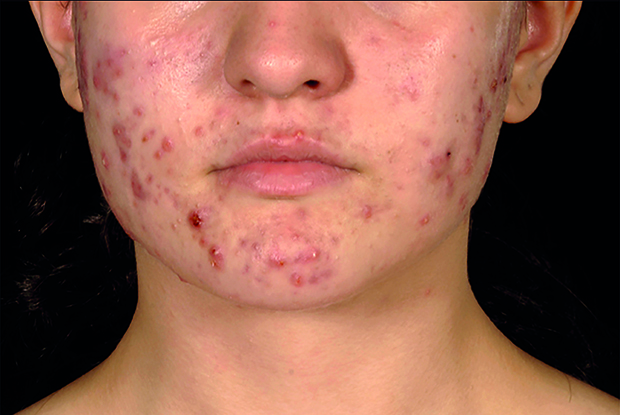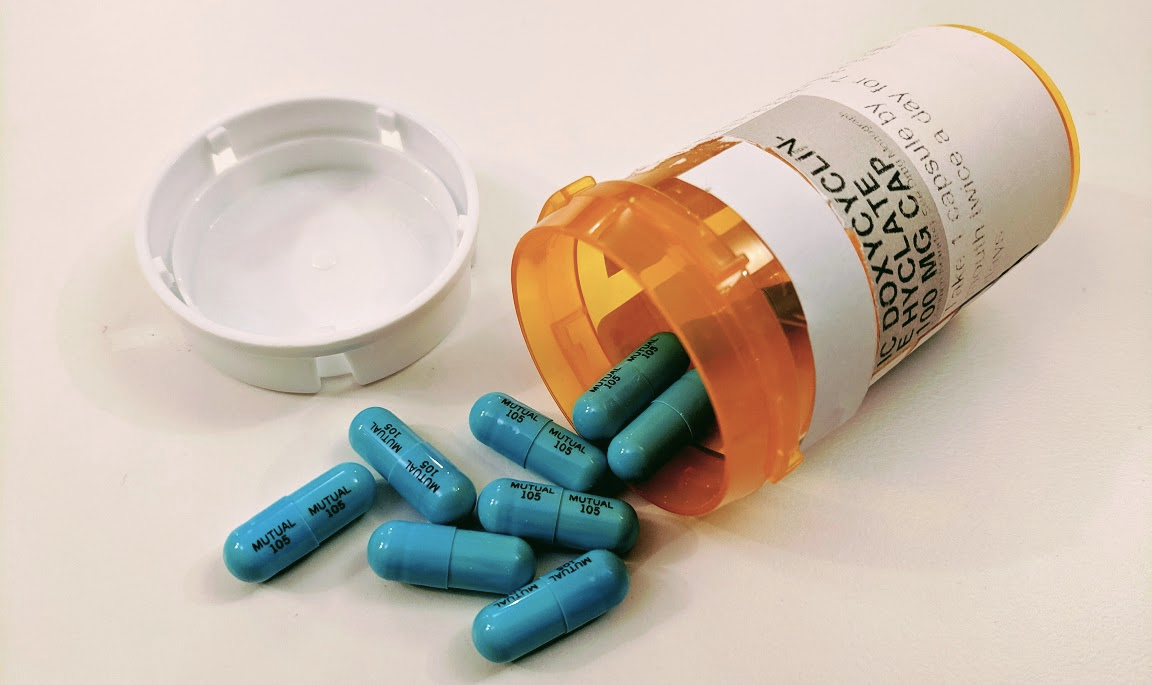Acne vulgaris as a mismatch disease
Introduction
Acne vulgaris is a condition of the skin that causes blemishes to appear due to the blockage of pores by dead skin cells, sebum, and bacteria. These blemishes can come in the form of pimples, blackheads, white heads, and cysts. Acne vulgaris is the most common form of acne, with 80% of the US population experiencing some form of it in their lifetime (Jaggi Rao, 2020). It is most common in adolescents (ages 10-19), but can occur in people of all ages. As our environments have made rapid transformations towards modernity, humans have struggled to adapt to certain changes. Certain environmental changes that have occurred include: diet, exercise, cultural changes, and the development of technology. These changes have caused humans to be more prone to develop diseases that did not appear in early Homo sapiens. Genes that can cause one to become predisposed to one of these environmentally linked diseases were never selected against, which is why they are so prevalent today. These diseases are known as 'Evolutionary mismatches'. There is a belief that acne vulgaris could be a result of an evolutionary mismatch.

The Evolutionary Mismatch of Acne Vulgaris
Acne vulgaris is a common skin condition which is believed to be linked to an evolutionary mismatch. This evolutionary mismatch is proposed to be linked to the inflammatory components found in fast foods. While there are multiple factors that can lead to acne vulgaris (hormonal fluctuations that begin at puberty, stress, and hygiene habits) processed foods that are high in sugars have been defined as a direct cause of acne. The belief that fast food is connected to a higher prevalence of acne in populations of adolescents was further substantiated by a study done on the prevalence and severity of acne in the Dogon population of Mali, Africa (Campbell & Strassmann, 2016). This population was used because they consume very little processed sugars, meats, carbs, dairy, and other foods that are considered inflammatory. Dogons mainly consume pearl millet (which is an ancient African grain), as well as mangoes, oranges, bananas, papayas, guavas, wild fruits, locally grown peanuts, and beans. These foods are considered non-inflammatory and have a low glycemic load. Results from this study showed that prevalence and severity of acne is much lower in the Dogon population, with 71.2% of the adolescents surveyed presenting no acne, and 28.2% of the population falling into more
severe cases of acne.

Figure 1. The number of adolescents in the study as compared to the acne grade that was observed. We can observe the low prevalence and severity of acne within this population.

Figure 2. A) The percentage of the population that has acne and their ages. This includes any severity. B) The percentage of the population with acne in males vs. females.
We can observe in Figure 1 (Campbell & Strassmann, 2016) that a large majority of the population presented no acne, and the amount of people that did present more severe acne was very minor. It should also be noted that in this study, the prevalence of acne increased with age and hormone levels. This could mean that while acne is a condition that is related to hormones, it is exacerbated by a diet that is high in inflammatory content. I included Figure 2 (Campbell & Strassmann, 2016) in order to display the positive trends that correlated with age. The low prevalence and severity of acne in the Dogon population contrasts the high prevalence and severity that is found in high income areas and urban areas where modern lifestyles and diets are more common. Genes do not necessarily determine whether an individual will have acne or not, but some genes can help an individual w ard off some of the bacteria that is known to cause acne. There are also hormonal conditions (like Polycystic Ovarian Syndrome) that÷≥ can also promote substantial acne prevalence.
Dysevolution and Acne Vulgaris
Dysevolution is known as a vicious feedback loop where we treat the disease instead of trying to cure it by changing the environment. I definitely do think that this disease is subject to dysevolution. The prevalence of inflammatory foods is not going away any time soon because they are easy and inexpensive to produce, and popular because they taste good. There are various treatments that have been developed in order to combat acne, since it is usually perceived as a form of disfigurement and can sometimes cause discomfort. These treatments range anywhere from face creams, injections, antibiotics, and home remedies. Accutane is an example of a treatment of acne that has seen great success for severe cases of acne. People rely on these "quick and easy" fixes so that they can continue consuming foods that gave them acne in the first place.
Can we reconsider how we treat Acne Vulgaris?
There is a wide variety of treatments for acne, but no definitive "cure". In terms of reconsidering how we treat this disease, I do not necessarily think there is much that needs to be done. While acne can appear unsightly, it is often not going to put a person in direct harm. Acne, as I mentioned before, is also not common for people beyond their teenage and early adult years. Because of the impermanence of this affliction, there is less of a motivation to cure it through the modification of our environment. It is also important to note that for some countries (like the US) some people have trouble finding foods that are both affordable and healthy. While it is possible to improve this skin condition through a diet with non-inflammatory properties, it is not accessible to everyone. Ideally we would cut out all of the foods that are bad for us to help improve many health conditions that have developed due to our poor diets.



Conclusion
We can conclude this blog by acknowledging that there is a correlation between our modern diets and the prevalence of acne within our populations. While hormones and genetics do seem to play a role in the prevalence of acne, it is not as strongly linked to its severity as diet. This connects to what we have learned in class because it is a good example of how common evolutionary mismatches can be and how dysevolution displays the bandaids of treatment we have for these mismatches. The fast modernization of our society has caused our bodies to not be able to keep up and we are often suffering from it.
Citations
Campbell, C., & Strassmann, B. (2016, September 20). Blemishes of modern SOCIETY? Acne prevalence in the DOGON of Mali. Retrieved April 05, 2021, from https://academic.oup.com/emph/article/2016/1/325/2802837
Jaggi Rao, M. (2020, August 28). Acne vulgaris. Retrieved April 05, 2021, from https://emedicine.medscape.com/article/1069804-overview
Hi Mary-Clare,
ReplyDeleteI thought your post was extremely interesting. In my blog, I wrote about postpartum depression. My mismatch disease seems to be related to yours in that researchers also believe postpartum depression could be a result of the nutritionally deficient diets that most modern women consume, which is lacking in omega-3 fatty acids and other important nutrients. In your post, you alluded to the idea that these conditions aren't necessarily related to genes. Instead, they could be a result of the lifestyles that we lead, which are byproducts of modern life. In the future, I think it will be more important to first try to treat these illnesses by recommending lifestyle changes than by prescribing medications, which may become more of a last resort.